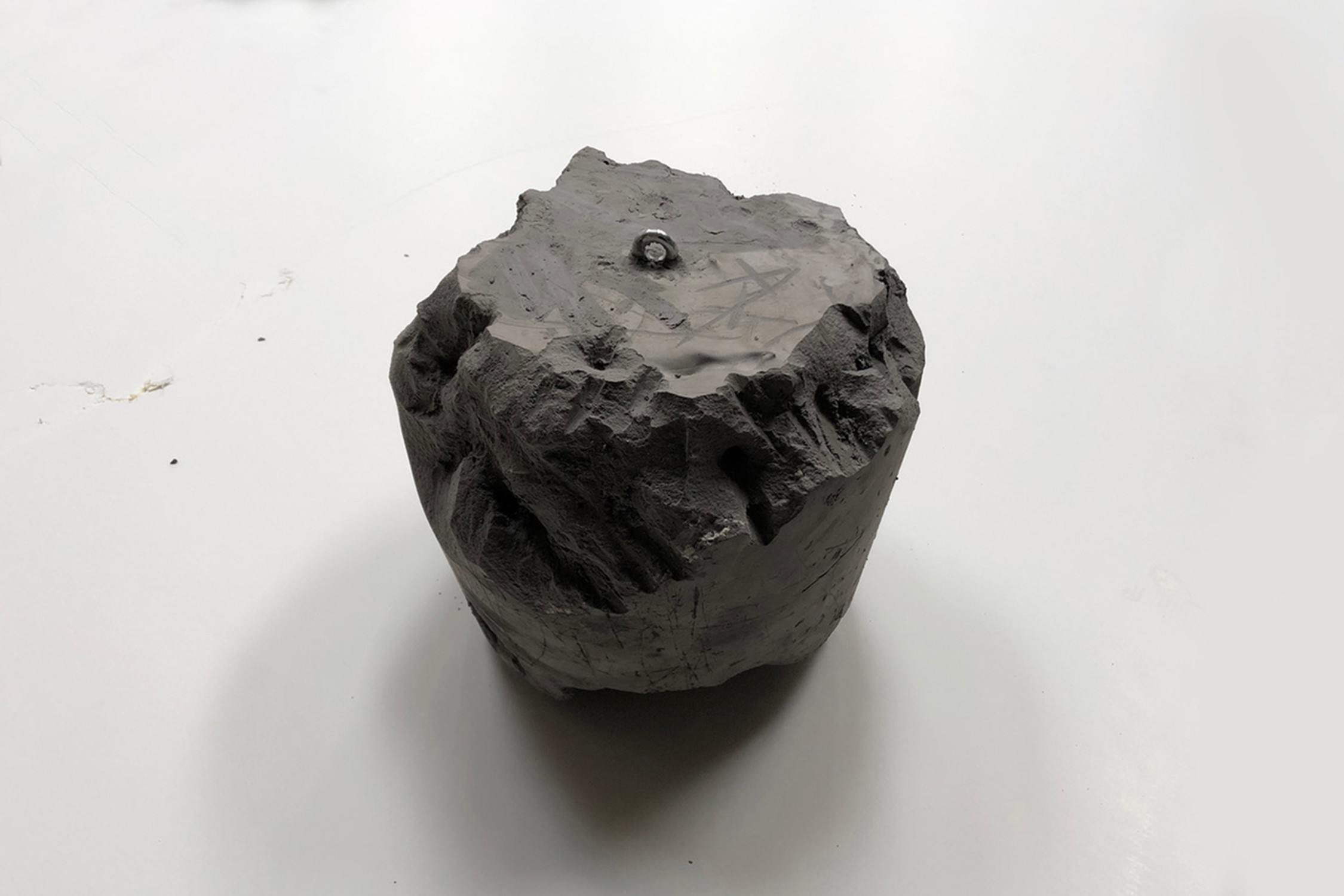
Felix Kiessling
I shall willingly pause
Mazzoli Gallery Offsite, Düsseldorf, Germany
Opening: Apr 3, 2019 | 7 pm
Galerie Mazzoli is proud to present I shall willingly pause, the first solo exhibition by Hamburg born artist Felix Kiessling.
A huge clock (Zeitzeichnung, 2019) is ticking in a dark room, its hand lugging a rock that leaves a trace of its passage. At every lap, the mark is slightly different, for uncontrollable external factors affect its perpetual task, thus revealing a lack of precision. This rather wild timekeeping instrument responds to contingent environmental phenomena we cannot control: small seismic movements, temperature, even the rock’s own mass behaving differently every time.
For thousands of years, man has grappled to understand the universe’s geometry; Kiessling’s research partly draws from this perpetual human exercise of gleaning dimensions.
The artist, however, neither seeks to depict time, as an artist would do, nor chases an exact measurement of it, as a scientist would. He is resolved to capture time.
In front of this clock we are invited to pause and stare: this device does not aim for exactitude, but rather welcome inexactness, inviting us to accept that things are ultimately out of our control.
A pressing subject within human thought, the measuring of time and space has proven to be a crucial challenge which gave rise to extraordinary inventions. Felix Kiessling is walking this path without following preordained paradigms, but rather overturning them. His research aims to question not only time and space, but also the way we tumble through them and the issue of measurability itself.
Kiessling’s measuring experiments originate from the feeling of lacking something that could give a sense of scale within the empirical experience. His works thus result in objects and images that fill this absence and concretely embody time and space. In the Erddurchstechung series, indeed, a photo displays two different locations joined by a vector seemingly piercing them from side to side. To achieve this effect the artist himself reached two remote (often opposite) points of the Earth and drove two poles into the ground. While the vector trajectory is drawn with mathematical precision, the effort is not addressed towards measuring, but rather erasing limits and distances.
Two opposite places on the planet are now virtually joined with a gesture which is not solely symbolic, as the poles will theoretically stay in place forever.
The artist places himself within the current critical discourse which encloses time and space as physical and geological phenomena. However, his research suggests a further outlook, detaching from any ecological and political perspective. His work steps away from any socially engaged or emotional human‐oriented approach, as it ultimately transcends human perception. Kiessling thus takes another step forward in the contemporary artistic research around physical dimensions and natural phenomena, by pushing its boundaries out of the current human‐scaled debate.
The new reference system he has created is a brand new logic that overrides mankind ‐in a chronological and semantic meaning – reaching beyond the confines of human existence and experience.
Exctract from the critical essay by Lucia Longhi